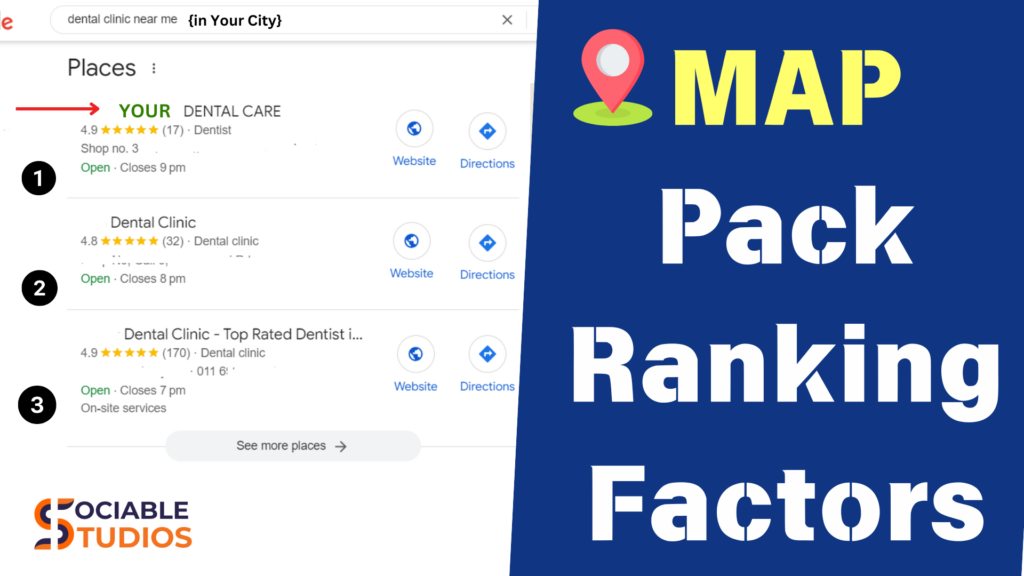Best Semantic SEO Techniques in 2025 – In the ever-changing world of search engine optimization (SEO), staying ahead of the curve is crucial.
In 2025, semantic SEO continues to dominate as one of the most effective ways to rank higher on search engines like Google.
But what exactly is semantic SEO? And how can you use it to improve your website’s rankings and attract more visitors?
In this article, we shared the best semantic SEO techniques in 2025, explained in simple language, so even a beginner can also understand and apply them.
What Is Semantic SEO?
Semantic SEO is optimizing your website so that search engines understand the meaning and context of your content rather than just matching keywords.
Instead of focusing on individual words, semantic SEO looks at the bigger picture—how topics and phrases are connected.
For example, if you’re writing about “apple,” a search engine can determine whether you mean the fruit or the tech company based on the context of your content.
By applying semantic SEO, your website becomes more relevant to search engines and users, leading to higher rankings and better user experiences.
Why Is Semantic SEO Important in 2025?
Search engines like Google are becoming smarter every year. With advancements in AI and natural language processing, they can now understand the context and intent behind a user’s query. This means that old-school techniques like keyword stuffing no longer work.
Instead, Google rewards websites that provide comprehensive, meaningful, and well-structured content. That’s where semantic SEO techniques come into play.
Here are some benefits of semantic SEO:
Better rankings: Search engines prioritize relevant and comprehensive content.
Increased traffic: Your site will appear for a wider range of related searches.
Improved user experience: Visitors find the answers they’re looking for quickly.

Best Semantic SEO Techniques in 2025
1. Focus on Search Intent
Search intent refers to the purpose behind a user’s query. To create content that matches search intent:
Research what users are searching for and why.
Identify whether they’re looking for information (informational intent), making a purchase (transactional intent), or comparing options (navigational intent).
For example, a query like “best smartphones under $500” indicates transactional intent. Your content should provide recommendations, reviews, and links to purchase options.
2. Organize Your Content with Topic Clusters
Google rewards websites with well-organized content. A topic cluster is a group of related content linked together to provide comprehensive information on a subject.
Here’s how to create a topic cluster:
Choose a broad topic, like “semantic SEO.”
Write a detailed pillar page on this topic.
Create supporting content, such as articles on “how semantic SEO improves rankings” or “tools for semantic keyword research.”
Link all these pages together.
This structure makes it easier for search engines to understand your website and rank it higher.
3. Use Related Keywords
Gone are the days of targeting a single keyword. Now, it’s all about using related keywords to create content that covers a topic thoroughly.
For example, if your primary keyword is “semantic SEO techniques,” you can also include related terms like:
Semantic keyword research
Internal linking strategies
Topic Relevance in SEO
Using related keywords helps Google understand the broader context of your content.
4. Add Schema Markup
Schema markup is a type of code you add to your website to help search engines understand your content better. It can highlight important details like:
Product descriptions
FAQs
Reviews and ratings
For example, if you run an SEO agency, you can use schema markup to showcase your services, contact details, and client reviews. Adding schema improves your chances of appearing in rich snippets, which can boost your click-through rates.
5. Write Longer and More Comprehensive Content
In 2025, long-form content is still king. Articles that are 1,000 words or longer tend to rank better because they cover topics in greater depth.
When writing, focus on:
Answering user questions thoroughly.
Including FAQs related to the topic.
Covering subtopics and examples.
For instance, if you’re writing about “internal linking strategies,” you could also discuss:
The importance of linking related pages.
How to use tools for internal linking.
Common mistakes to avoid.
6. Optimize for Voice Search
Voice search is growing rapidly, with devices like Alexa, Google Home, and Siri becoming more popular. To optimize for voice search:
Use natural language in your content.
Include question-based keywords, such as “What is semantic SEO?”
Provide concise answers at the beginning of your articles.
Voice search optimization ensures your content ranks for conversational queries.
7. Improve Internal Linking
Internal linking connects one page on your website to another. It helps users navigate your site and tells Google about the relationships between your pages.
Best practices for internal linking:
Use descriptive anchor text, like “semantic SEO techniques” instead of “click here.”
Link to pages with related content.
Avoid linking to irrelevant pages.
For example, if you write a blog post about “SEO tools,” you can link it to your service page for “SEO optimization services.”
8. Leverage LSI Keywords
Latent Semantic Indexing (LSI) keywords are terms related to your main keyword. These keywords help search engines understand the context of your content.
For example, if your primary keyword is “web design services,” your LSI keywords might include:
Responsive design
UX/UI design
Website development tools
Use tools like LSIGraph or Google Keyword Planner to find LSI keywords.
9. Update Old Content
Keeping your content fresh and relevant is a critical part of semantic SEO. Google favours websites that regularly update their information.
Steps to update old content:
Add new statistics or examples.
Refresh outdated sections.
Include new related keywords.
Fix broken internal or external links.
For instance, if you have a blog post titled “SEO strategies for 2023,” update it to reflect “SEO strategies for 2025.”
10. Utilize Visual Content
Visuals like images, infographics, and videos enhance user engagement. They also help search engines understand your content through image alt tags and video descriptions.
Tips for visual optimization:
Use high-quality images with descriptive file names (e.g., semantic-SEO-chart.jpg).
Add subtitles to videos for accessibility.
Use charts and graphs to explain complex topics.
For example, an infographic on “how semantic SEO works” can help readers understand the concept quickly while improving your chances of ranking in image search results.
11. Answer People Also Ask Questions
Google’s “People Also Ask” (PAA) section provides valuable insight into user queries. Include these questions and answers in your content to make it more comprehensive.
For example, if the PAA box shows questions like:
- What is the difference between semantic and traditional SEO?
- How does semantic SEO improve rankings?”
Answer these in your content to rank for those queries.
12. Track and Measure Your Results
Finally, use tools like Google Analytics, Ahrefs, or SEMrush to monitor your progress. Track metrics like:
Organic traffic
Bounce rate
Keyword rankings
Analyzing these metrics helps you fine-tune your semantic SEO strategy for even better results.
These best semantic SEO techniques in 2025 can help you create more relevant, engaging, and high-ranking content. Start applying them to your website today to stay ahead of the competition
FAQs related to How to Optimize for Semantic SEO:
1. How do you optimize for semantic SEO?
To optimize for semantic SEO:
Understand user intent: Create content that answers user questions comprehensively.
Use related keywords: Incorporate semantically related terms and phrases in your content.
Organize content into topic clusters: Structure your website with pillar pages linked to relevant subtopics.
Leverage schema markup: Add structured data to help search engines understand your content better.
Focus on internal linking: Link-related pages to improve contextual relevance.
Create high-quality content: Ensure your content provides value and satisfies user queries.
2. What is the most effective SEO tactic?
The most effective SEO tactics include:
Keyword optimization: Targeting relevant and long-tail keywords.
Quality content creation: Publishing helpful, well-researched, and engaging content.
Semantic SEO: Using related keywords and understanding user intent.
Technical SEO: Optimizing site speed, mobile-friendliness, and security.
Backlink building: Acquiring authoritative backlinks to boost your website’s credibility.
On-page SEO: Optimizing meta tags, headings, and internal linking.
3. What are the tools for semantic SEO?
Some popular tools for semantic SEO are:
SEMrush: For keyword research and topic clusters.
Ahrefs: For analyzing related keywords and backlink opportunities.
LSIGraph: This is used to identify latent semantic indexing (LSI) keywords.
AnswerThePublic: To discover commonly searched questions and topics.
Google Keyword Planner: This is for finding semantically related search terms.
SurferSEO: For content optimization based on semantic analysis.
4. Does Google use semantic search?
Yes, Google heavily relies on semantic search. With updates like Hummingbird and RankBrain, Google analyzes:
The context of search queries rather than just keywords.
Relationships between words and phrases to understand intent.
Structured data, schema markup, and contextual relevance to provide accurate results.
5. What are semantic search techniques?
Semantic search techniques include:
Understanding user intent: Focusing on what users are searching for and why.
Using related keywords: Expanding keyword strategy to include synonyms and phrases.
Schema markup: Adding structured data to highlight content meaning.
Internal linking: Linking related pages to create semantic connections.
Optimizing for voice search: Creating conversational content for voice search queries.
Creating content clusters: Grouping related topics under a central pillar page.
6. What is the tool used for SEO?
Popular tools used for SEO include:
Google Search Console: This is used to monitor website performance in search results.
Google Analytics: For tracking traffic and user behaviour.
SEMrush: For keyword research, competitor analysis, and content optimization.
Ahrefs: For backlink analysis and keyword tracking.
Yoast SEO: A WordPress plugin for on-page SEO optimization.
Screaming Frog SEO Spider: For auditing technical SEO.





